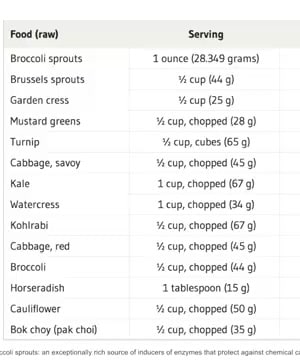How to release sulforaphane?
Sources:
To release sulforaphane effectively from cruciferous vegetables like broccoli and broccoli sprouts, it's important to utilize the enzyme myrosinase, which is responsible for converting the precursor glucoraphanin into sulforaphane. Here are the key methods to maximize sulforaphane release:
-
Crushing or Chewing: The physical action of crushing or chewing the vegetables helps release myrosinase, enabling the conversion of glucoraphanin to sulforaphane. Raw consumption is very effective as heat can deactivate myrosinase 1.
-
Light Steaming: Lightly steaming the vegetables for about 3-4 minutes can enhance the release of sulforaphane by deactivating a protein that inhibits its formation while still preserving the activity of myrosinase. Overcooking or boiling should be avoided as it can destroy the enzyme 1.
-
Pairing with Myrosinase-Rich Foods: If the vegetables are cooked in a way that might degrade myrosinase, pairing them with foods that are rich in this enzyme, such as mustard seeds, can help. Mustard seeds can provide additional myrosinase, facilitating the conversion of glucoraphanin into sulforaphane even in cooked vegetables 2.
-
Optimal Cooking Temperature: If you need to cook the vegetables, doing so at controlled temperatures—60 degrees Celsius for mature broccoli florets and 70 degrees Celsius for broccoli sprouts (each for about 10 minutes)—can increase sulforaphane production by threefold without deactivating myrosinase 3.
-
Avoid Boiling: Boiling can significantly reduce the content of valuable nutrients like sulforaphane by destroying myrosinase and leaching the compounds into the cooking water 1.
These methods ensure that you maximize the health benefits derived from sulforaphane in your diet.
RELATED QUESTIONS-

